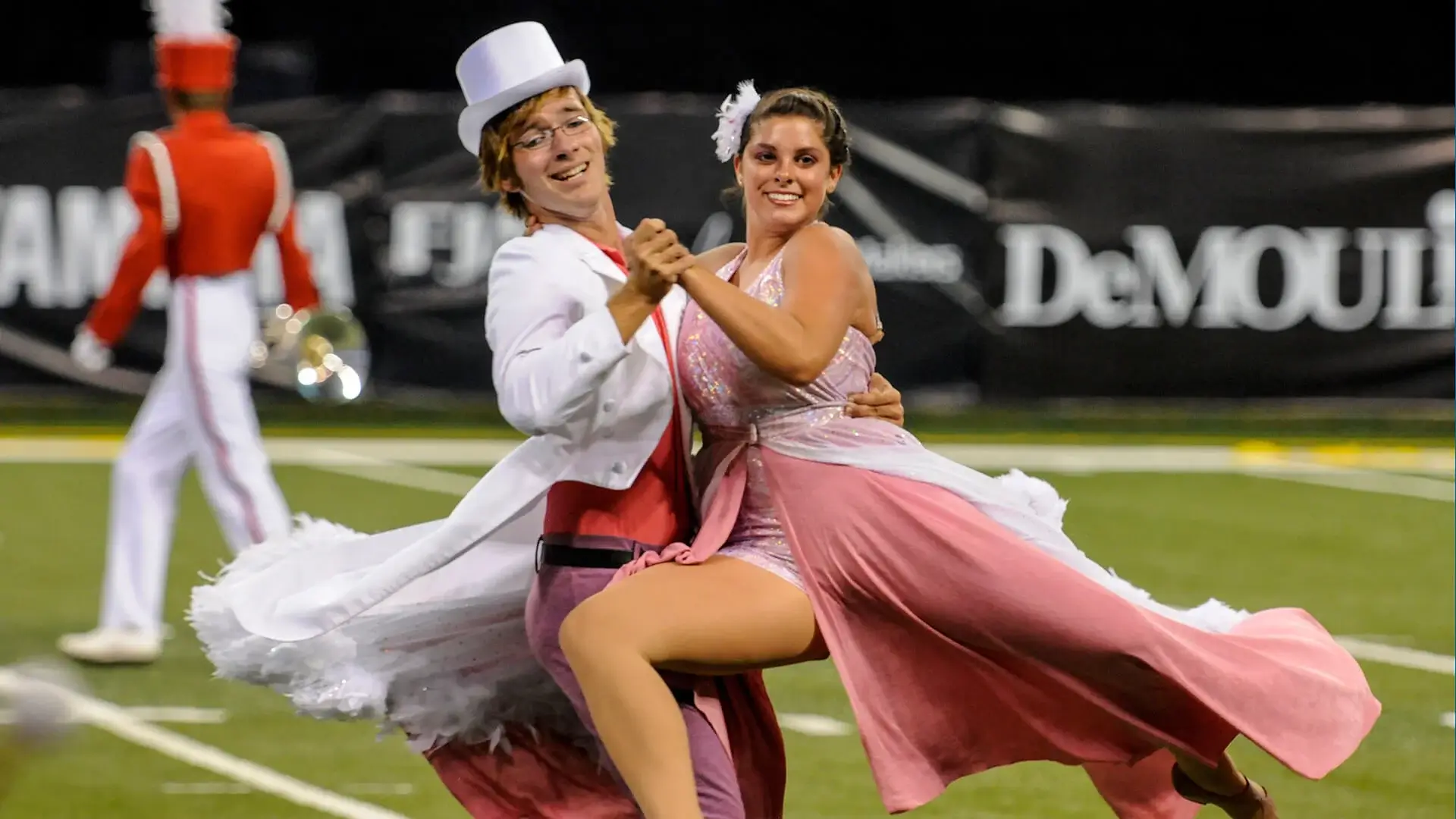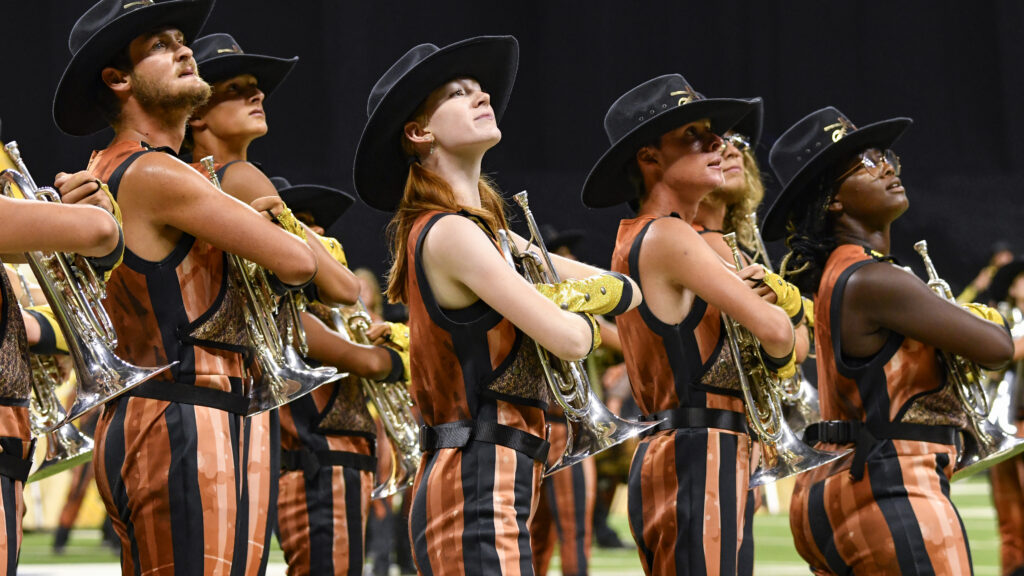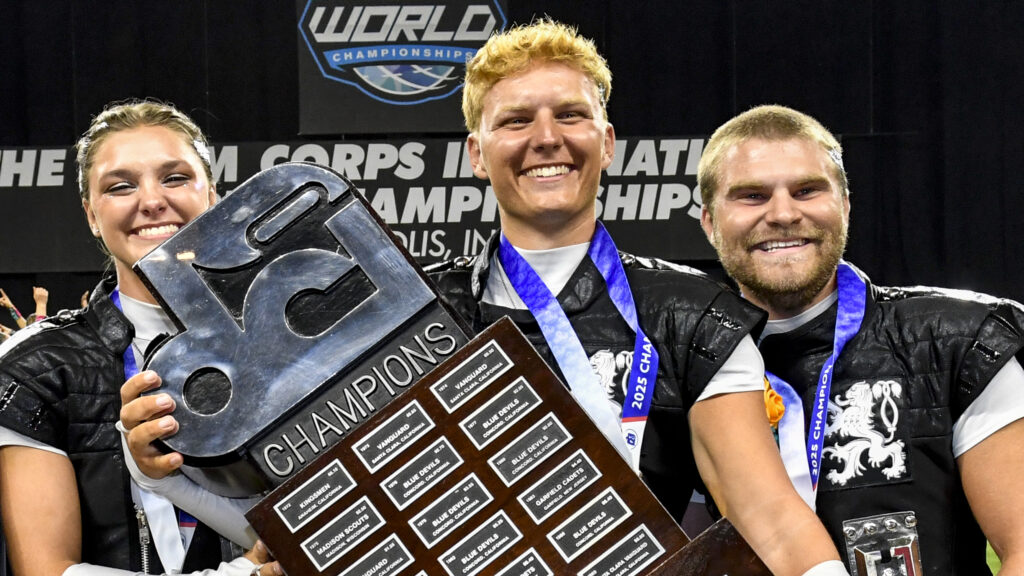The 2011 Drum Corps International World Championships were to kick off with the first two-day Open Class Prelims/Finals to ever be held at Michigan City’s Ames Field. However, an intense daylong thunderstorm resulted in the Prelims being cancelled, with all corps slated into the Finals competition the next day.
The top-12 corps in the following day’s competition were declared 2011’s Open Class finalists, with Yokohama Scouts from Japan and Jubal from the Netherlands announced as first and second place in the International Class division.
Open Class Champions Blue Devils B topped Oregon Crusaders by three tenths of a point to win the best general effect and best percussion caption awards. Second place went to the Oregon Crusaders who captured the best brass and best visual performance captions, and members of the Spartans took the award for best color guard after working their way back up the competitive ranks after a season of inactivity in 2009.
Music City finished its 2011 campaign in eighth place amongst Open Class corps. The show, titled “Let’s Dance,” was a smorgasbord revue of pop and symphonic dance tunes. Color guard members wore dance costumes from throughout history to accentuate each segment.
A recurring snippet of “I Could Have Danced All Night” was sprinkled throughout the show. Composer Frederick Loewe and lyricist Alan Jay Lerner wrote the melody for the 1956 production of “My Fair Lady,” which at the time was the longest running show ever on Broadway.
To kick things off, Music City featured color guard members warming up at one of two ballet barres, the handrails dancers use for stretching during warm-ups, while other guard members stretched out on the field.
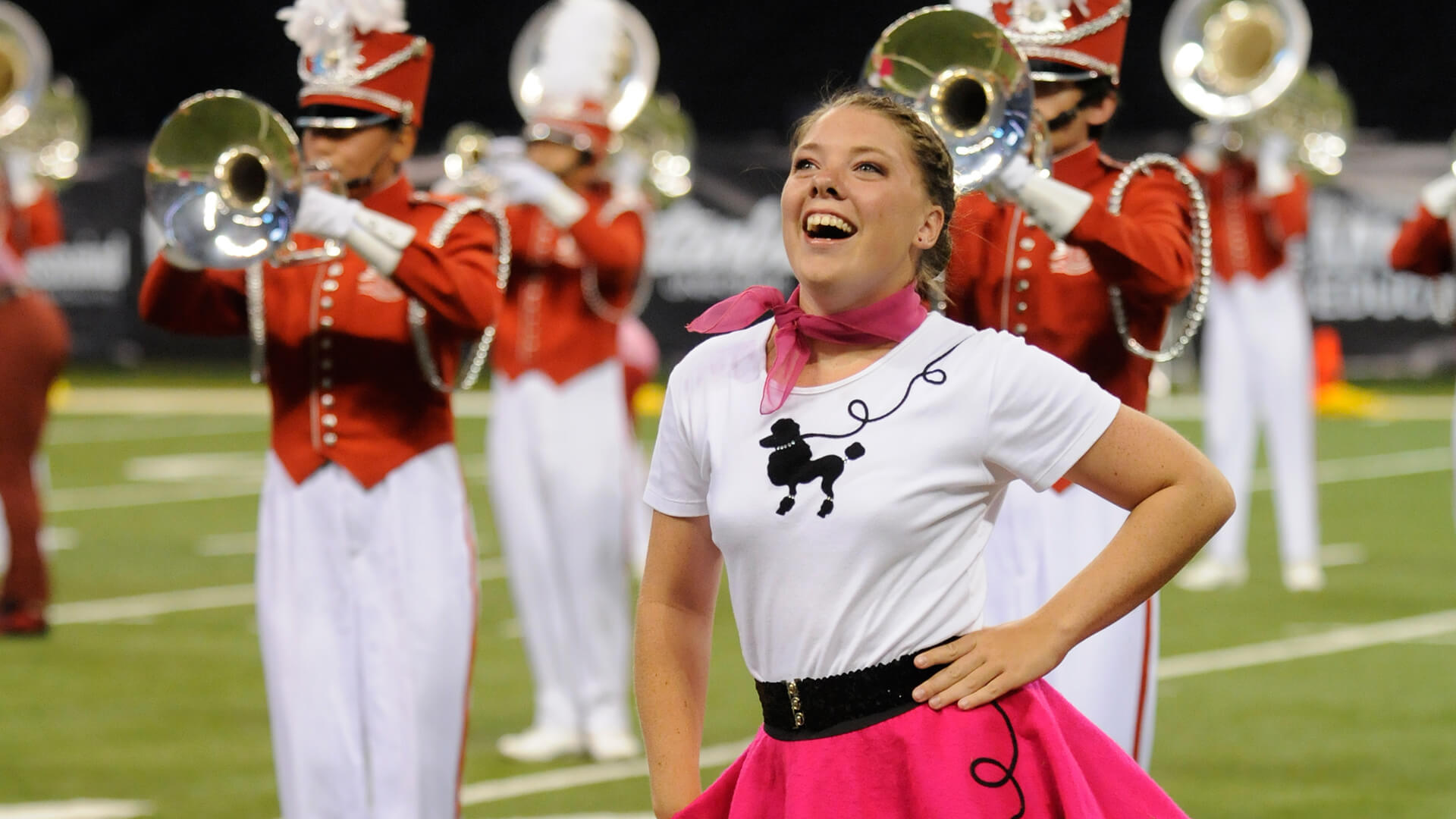
After the introduction of the first rendition of “I Could Have Danced All Night,” the production moved into “Bandstand Boogie.” The piece was written by Charles Albertine and for decades was utilized as the theme song for the popular television mainstay “American Bandstand,” which featured teens dancing to the latest Billboard Top-40 hits. Atop a platform, a color guard member dressed in a poodle skirt encouraged all to get on the floor and dance.
“Waltz of the Flowers” originated as part of the second act of Peter I. Tchaikovsky’s 1892 ballet, “The Nutcracker,” and was famously featured in Disney’s 1940 movie “Fantasia.” The colors of Music City’s flags were the same as the four colors of the giant flower heads that moved about the field on the heads of guard members.
At the end of the piece, a male guard member wearing a Native-American headdress ran out onto the field for the beginning of “Rain Dance,” a drum feature written by corps percussion arranger Hunter Strickland.
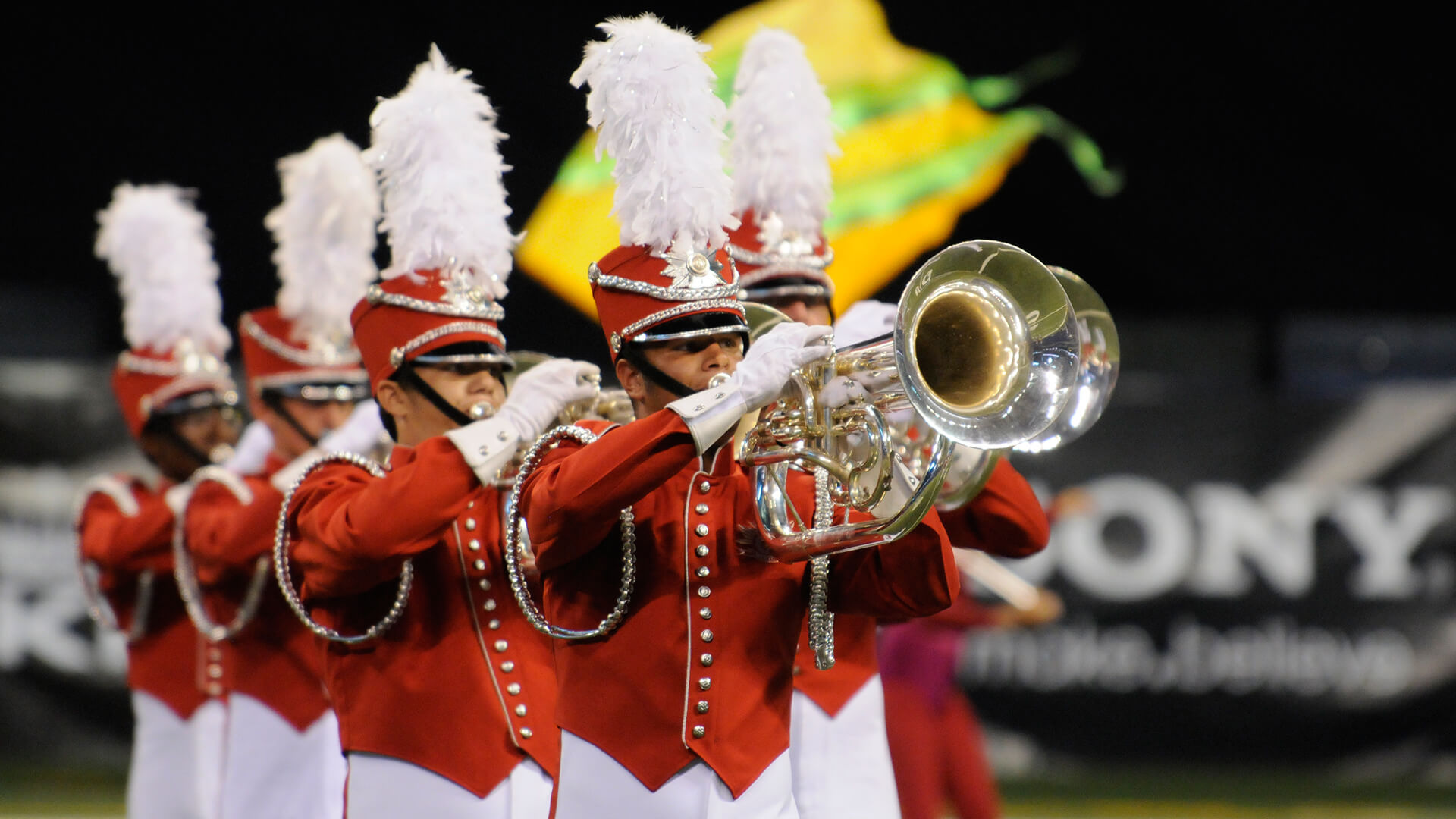
A solo baritone player performed a short snippet of “Singin’ in the Rain” next, accompanied by a color guard member with an umbrella to set the theme. Arthur Freed wrote the music somewhere between 1927 and 1931, and lyrics were penned by Nacio Herb Brown. The piece achieved popularity in the 1952 movie of the same name that featured Gene Kelly.
A. R. Rahman’s “Jai Ho” followed, which won the 2009 Academy Award for best original song and appeared in the Academy Award-winning best picture of “Slumdog Millionaire.” The title of the song is the Hindi phrase loosely translated as “Let victory prevail.” One female guard member wore a sari, the authentic draped dress from the Indian subcontinent.
Front ensemble percussionists followed with a short rendition of “I Could Have Danced All Night” which segued into “Tennessee Waltz,” a country song written in 1946 by Pee Wee King. The song became Patti Page’s biggest hit when she recorded in 1950, and it interestingly became the best selling song ever in Japan. To set the theme, two color guard performers were featured as dancers in formal wear, the male wearing a top hat and the female adorned in a flowing pink robe.
The corps next turned to the popular 1970s hit “Dancing Machine,” which was written by Hal Davis, Donald Fletcher, and Dean Parks and released as a single by The Jackson 5 in 1974 after achieving minimal success on the group’s 1973 album, “Get it Together.” A highlight of the corps’ performance in this segment was a tap dancer atop a podium.
In an exhausting conclusion, a rendition of “I Could Have Danced All Night” was superimposed over short clips of “Russian Sailors’ Dance,” “Mexican Hat Dance,” ABBA’s “Dancing Queen,” “Roll Out the Barrel,” and “Can-Can.”
A rainbow of different colored flags featured images of leaping dancers as the eight previously featured dancers from the show gathered under a backfield proscenium to take a bow during one final curtain call.

Michael Boo was a member of the Cavaliers from 1975-1977. He has written about the drum corps activity for more than 35 years and serves as a staff writer for various Drum Corps International projects. Boo has written for numerous other publications and has published an honors-winning book on the history of figure skating. As an accomplished composer, Boo holds a bachelor's degree in music education and a master's degree in music theory and composition. He resides in Chesterton, Indiana.


